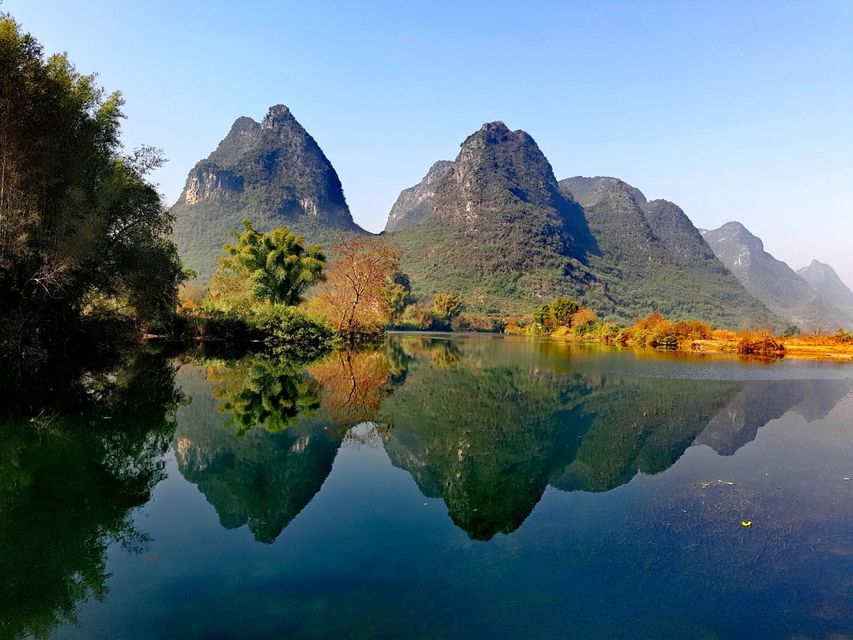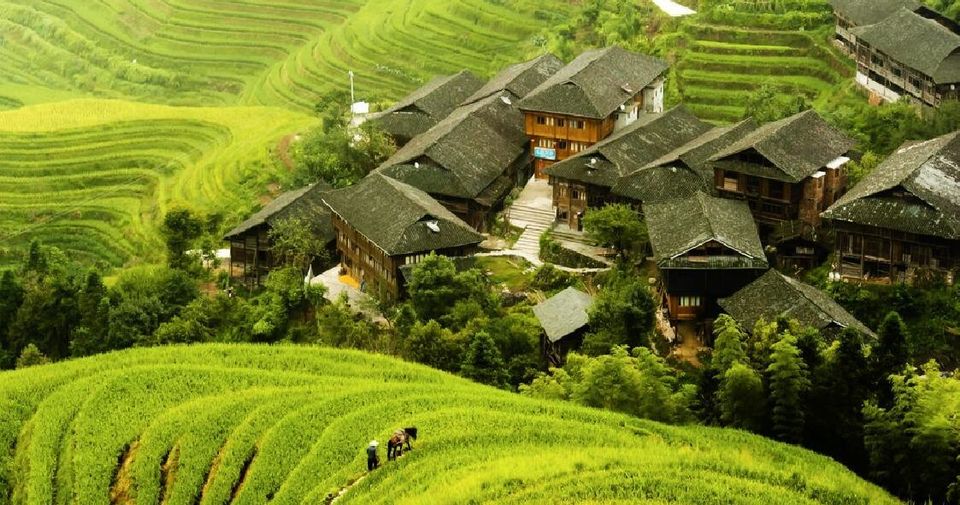China is a unified country with multiple ethics. From the Xia, Shang, and Zhou dynasties, the ancestors of the Chinese people interacted with different tribes and fused different cultures to grow stronger and form a multi-ethnic country. The Chinese history, seen from the perspective of national development, is a history for many ethics to develop together. There are 56 ethnic groups in total in China. The Han ethnic group is China's leading ethnic group, accounting for 91.51% of the total population, and the other 55 ethnic groups, accounting for 8.49%. Still, the 55 ethnic groups are inseparable and have made extraordinary contributions to China's development.
Ethnic Minority Groups
1. Zhuang Nationality
The Zhuang nationality is the most populous ethnic group in China. Its ethnic language is Zhuang, which belongs to the Zhuang-Dai branch of the Zhuang-Dong group of the Sino-Tibetan language family.
According to available history records, the Zhuang nationality originated from the Xiqiao and Luoyue people that lived in the Lingnan area in Qin and Han Dynasties. Today, Zhuang people are distributed in 31 provinces, autonomous regions, and municipalities in China. Most of them live in southern China, starting from Lianshan Zhuang and Yao Autonomous County of Guangdong Province to the east, Wenshan Zhuang and Miao Autonomous Prefecture of Yunnan Province to the west, Miao and Dong Autonomous Prefecture of Guizhou Province to the north, and Beibu Gulf to the south. Guangxi Zhuang Autonomous Region is the main living area for the Zhuang people. As the most populous ethnic group among Chinese ethnic minorities, the Zhuang people have created a unique culture in language, medicine, kung fu, music, and the scenery of the areas where Zhuang people live are just magnificent.
Where can you visit?
As a province gathering most of Zhuang people, the Guangxi Zhuang Autonomous Region can provide you the best travel experience with both natural landscape enjoy and local Zhuang nationality culture. Visiting Guangxi, Guilin, and Yangshuo are the two most popular destinations. You may take a Li River Cruise from Guilin to Yangshuo to enjoy China's best river landscape. Getting off the cruise, take a walk or ride a bike in Yangshuo's countryside, and have a family visit to a local farmer’s house. If you have enough time, you may plan a trip to Longji Terraces Fields. No matter when you visit, the LongJi Terraces Fields can always surprise you. If you like, you may enjoy an ethnic dance and singing performed by the local Zhuang people in the Ping’an Village. To finish your Zhuang nationality tour strong, the show Impression Liusanjie is unmissable.
Recommended Itineraries: 4 Days Li River and Terraces Tour
2. Hui Nationality
The Hui nationality, one of the most populous ethnic groups in China, mainly lives in northern China, especially in Ningxia Hui Autonomous Region, Gansu, Xinjiang, Qinghai, Hebei, and Shandong. Its ancestors were mostly the relocated "Huihui" people who were impacted by the Westward Expeditions launched by the Mongols in the 13th century, and the Muslim Fan guests settled on the southeastern coast of China in Tang and Song Dynasties. In later generations, those Huihui and Muslim Fan guests absorbed the lifestyle and social customs of Han, Mongolian and Uygur nationalities. They intermarried people from those ethics, forming the current Hui nationality. The Hui people have learned to speak Chinese, but they still retain Arabic and Persian vocabulary in daily communication and religious activities. In the frontier ethnic regions, they even used the language of the local minorities.
Like any other minorities, Hui people like to live together, but history and society made them live in small groups. Some Hui people even migrated far from where they used to live. Therefore, it's quite common to see small Muslim quarters here and there in China. As they like to live along with the arterial traffics, the Hui people developed a developed economy and culture. They are also very good at doing business, especially in the catering business. This is why you can find many Muslim restaurants owned by Hui people all over the country.
Where can you visit?
To know about the Hui people, you have to visit Ningxia Hui Autonomous Region. To learn about the Ningxia province, you must visit Yinchuan, the provincial capital. Located east to the Helan Mountains and west to the Yellow River, Yinchuan has been reputed as the "Jiangnan Beyond the Great Wall" and the "Land of Fish and Rice" since ancient times. Its majestic natural landscapes, precious cultural relics from the Xixia Dynasty, tempting water town views, grotesque scenery of unique northwestern China, and the diversified Hui folk customs make the Yinchuan city one of the most charming cities in western China.
Mausoleums of Western Xia Dynasty, the largest royal cemetery with the ground sites best preserved, is a must-see sight. Nine emperors and over 200 ministers and imperials were buried here. Another must-see sight is the Cliff Paintings of Helan Mountain, where you will enjoy over a thousand paintings demonstrating the history, culture, economy, and religion of ancient nomads. Lastly, in the Suyukou National Forest Park, you will enjoy the ever-changing scenery of trees. Other sights include the Sanguankou Ming Dynasty Great Wall, Drum Tower, Haibao Tower, Guan Mosque, Cuiming Lake, and Shuidonggou Ruins of the late Old Stone Age.
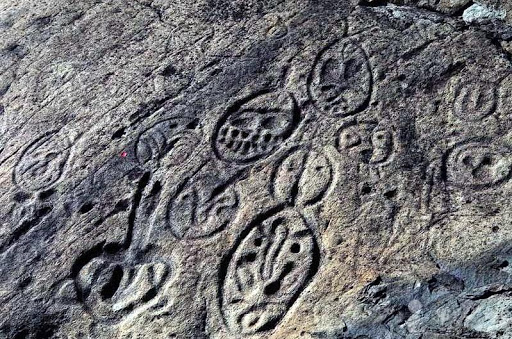
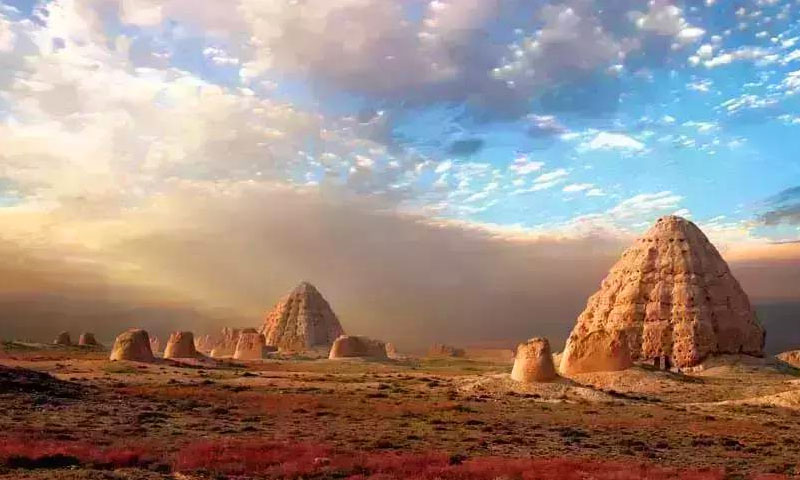
3. Manchu
The Manchus mainly live in northeastern China, and some live in Inner Mongolia, Hebei, Shandong, Xinjiang, and other provinces. Manchu nationality has a long history dating back to the Sushen people 2000 years ago. In 1644, the Manchu army led by Huangtaiji broke into Beijing and established the Qing Dynasty. Since then, the Manchu people began to live in other parts outside northeastern China.
The Manchu nationality has its language and characters created at the end of the 16th century by using the Mongolian alphabet. It belongs to the Manchu-Tungus branch of the Altai language family. In the 1740s, after breaking into central China, the Manchu people began to learn Chinese.
The Manchu people are good at singing and dancing, mostly from hunting and fighting activities. The Manchu men liked to wear blue robes and jackets, round cap, with their hair braided on the back of their heads. The Manchu women like to wear cheongsam, earrings, and handkerchiefs and comb their hair into a bun. After the founding of the Qing Dynasty, Manchu people tend to wear like the Han people, but the cheongsam has gained favor in later generations and became the traditional clothes for Chinese women.
Where can you visit?
As Manchu people are mainly living in Liaoning province, you must visit Shenyang if you want to learn more about Manchu people. As the capital city of Liaoning province, Shenyang city is the economic, cultural, traffic, financial, and commercial center of northeastern China. It’s also a substantial industrial base and historic city.
In Shenyang, you can visit many historical sights, like Shenyang Imperial Palace, Fu Tomb, Zhao Tomb, Memorial Sites, and many others. Shenyang Imperial Palace is the only existing palace complex beside the Forbidden City in Beijing. It was the palace where Nurhachi (the person who laid the foundation for the Qing Dynasty) and Huangtaiji (the person who founded the Qing Dynasty) had built and lived before the Qing Dynasty's founding. Belonging to the “three tombs outside the Shanhai pass," the Fu Tomb and Zhao Tomb are two unique traditional Chinese architectures with strong Manchu ethnic features. The Fu Tomb is the burial site for Nurhachi and his wife, while the Zhao Tomb is the burial site for Huangtaiji and his wife.
A lot of historical events happened in Shenyang, making it a place with a lot of memories. There are a lot of memorial sites in Shenyang, like the Zhang’s Mansion House (a mansion for warlord Zhang Zuolin and his son Zhang Xueliang), the “September Eighteenth” History Museum (in memory of the date when the Japanese invaders first attack China), Steam Locomotive Museum, and many more.
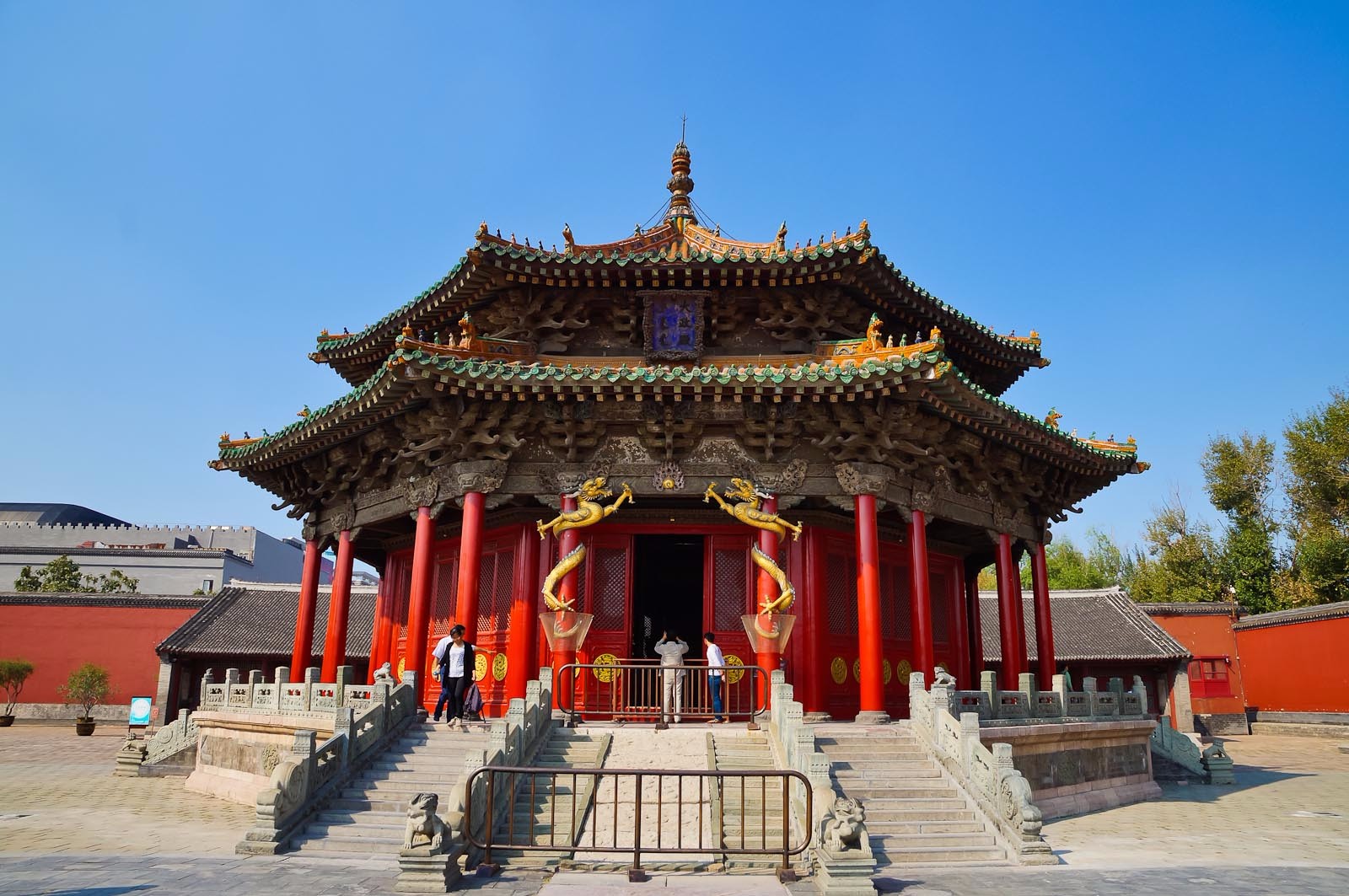
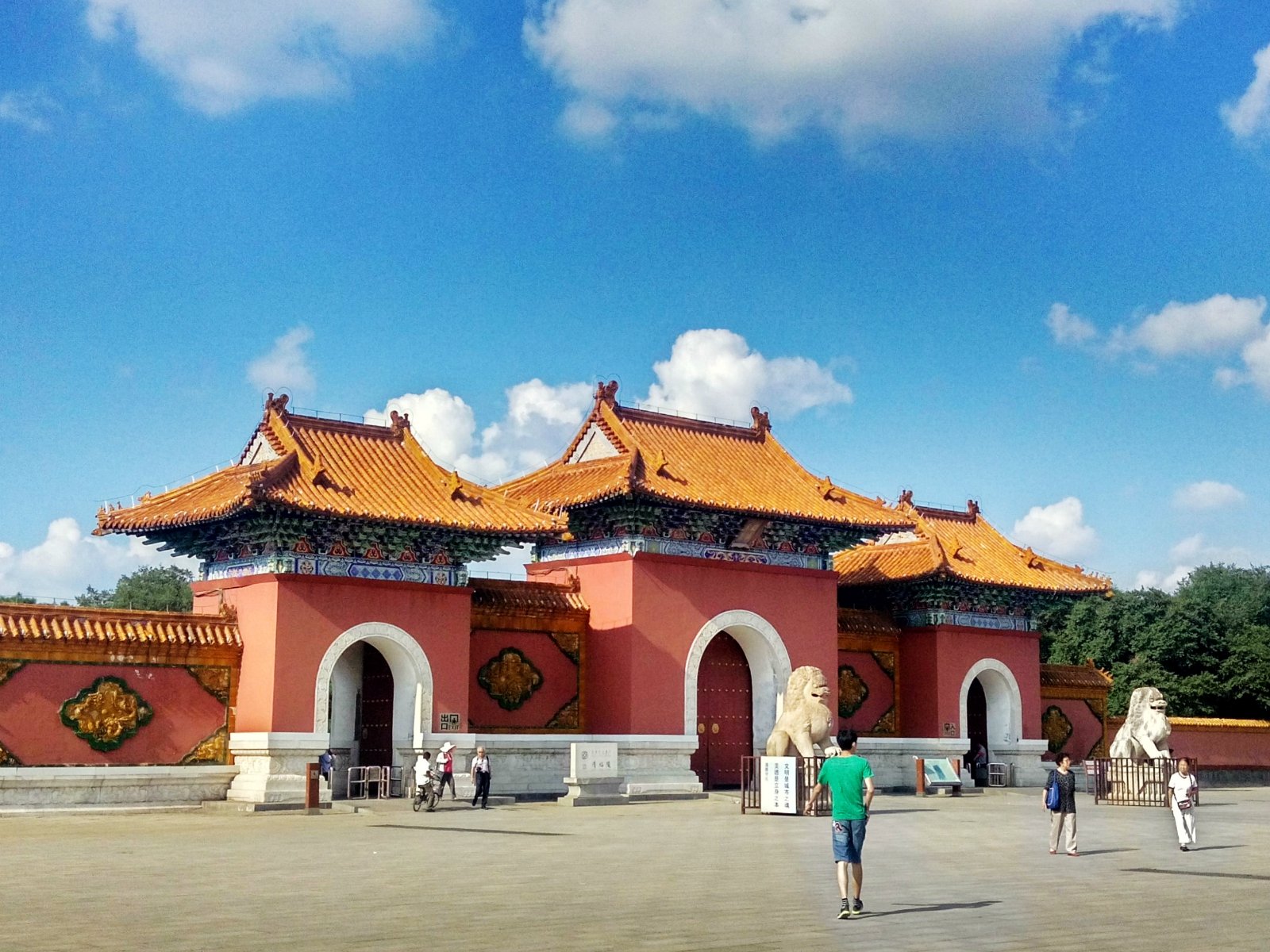
4. Uyghur Nationality
In the northwestern border of Xinjiang, at the foot of the snow-capped Tianshan Mountain, there live the Uyghur people who can sing and dance well. The Uyghur people mainly live in the Tianshan Mountains southern areas in Xinjiang Uygur Autonomous Region, such as Kashgar, Hotan, Aksu, and Korla. Some are scattered in Yili, north of the Tianshan Mountains, Taoyuan, Changde, and other Hunan provinces.
The Uyghurs have their languages. The Uyghur language belongs to the Turkic language family; its characters are Pinyin characters evolved from the Arabic alphabet. After the founding of the People's Republic of China, the new characters based on the Latin alphabet was promoted, making Uyghur people use both characters.
The Uyghur economy is mainly agricultural, and they grow crops such as cotton, wheat, corn, and rice. The Uyghur people are also good at garden art and have the largest grape production base in China.
The Uyghurs have their own unique culture and art. The story collection "Afanti's Story," the music and dance epic "Twelve Mukam," and the Uygur dance are all trendy both domestically and overseas. Uyghur medicine is an integral part of traditional Chinese medicine.
Where can you visit?
Most Uygur people live in the Xinjiang Uygur Autonomous Region. To understand the history and culture of Uygur ethics, you have to travel to Xinjiang. Three travel cities in Xinjiang can best represent the Xinjiang culture, Kashgar, Turpan, and Urumqi.
People who haven't been to Kashgar can not say that they have been to Xinjiang. As a city located in the far western fringes of Xinjiang province, Kashgar city is the epitome of the Xinjiang province with the rich Uyghur flavors. As the strategical position on the Silk Road, Kashgar city has fused cultures and customs from both eastern China and central Asia and formed its unique history and culture.
Visiting Kashgar, you must not miss the Tomb of Apakhoga, Id Kah Mosque, Banchao Memorial Park, Tomb of Mohamed Kashgar, Gaotai Folk Houses, Stone City, and many other historical sights. It will be a great place to explore the history and cultural changes in western China. You will also enjoy the magnificent natural landscapes. There is the second tallest mountain, Qiaogli Mountain, the Muztagh Peak, known as the "Father of Icebergs," and many primitive landscapes of desert, oasis, ice river, snow mountain, and forest.
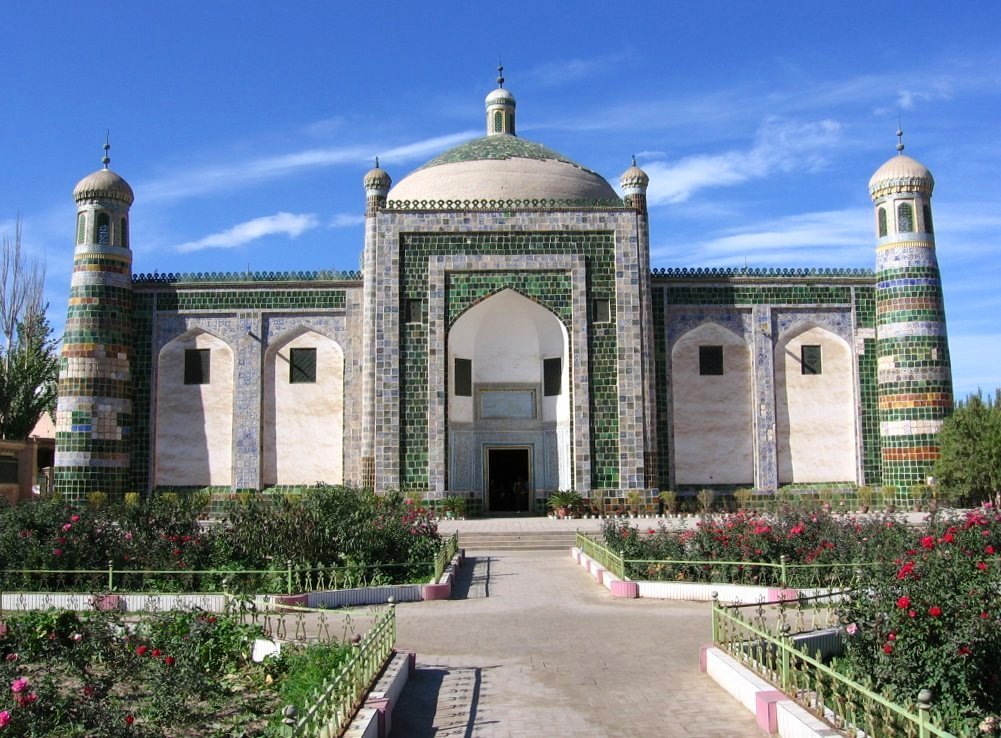

Turpan is a small city in Xinjiang, but it's very famous all over China for its scorching summer, ample fruits, rich historical sights, and unsophisticated folk customs. Visiting Turpan, you will see the Emin Minaret, Grape Valley, Flaming Mountain, Tuyu Valley, Gaochang Ancient City, and Jiaohe Ancient Town. As most of these sights are located outside the Turpan city, it's recommended to hire a car. Besides the historical sights, there are also many ancient trails o the Tianshan mountain, an ideal place for hiking adventures.
Urumqi is the capital city of Xinjiang province. Due to the longitude difference, Urumqi time is two hours later than Beijing time. When you travel to Urumqi, remember this time difference so you can avoid some misunderstandings. Visiting Urumqi, one thing you can't miss is the International Bazaar. It's considered the place where all the Uyghur cultural traits are best demonstrated. You can buy a variety of productions coming from all over Xinjiang and surrounding countries. You can also taste the most delicious local food while appreciating the unique architecture.
All in all, Urumqi International Bazaar is a great place to experience the featured Uyghur culture. You may also travel to Heavenly Lake of Tianshan Mountain to enjoy the stunning natural views. There is a saying that Xinjiang people wear cotton-padded clothes in the morning and change into gauze clothes at noon. At the same time, in the evening, they eat watermelons around the stove, vividly showing how fast the temperature in Xinjiang varies in a day. The surface heats up quickly with the sunlight in the daytime and cools down even more rapidly at night. If you travel to Heavenly Lake, you will experience the four different seasons in one day. Of course, the enticing scenery of Heavenly Lake is another reason to attract you. If you travel to Urumqi in winter, you can have an exhilarating ski experience.
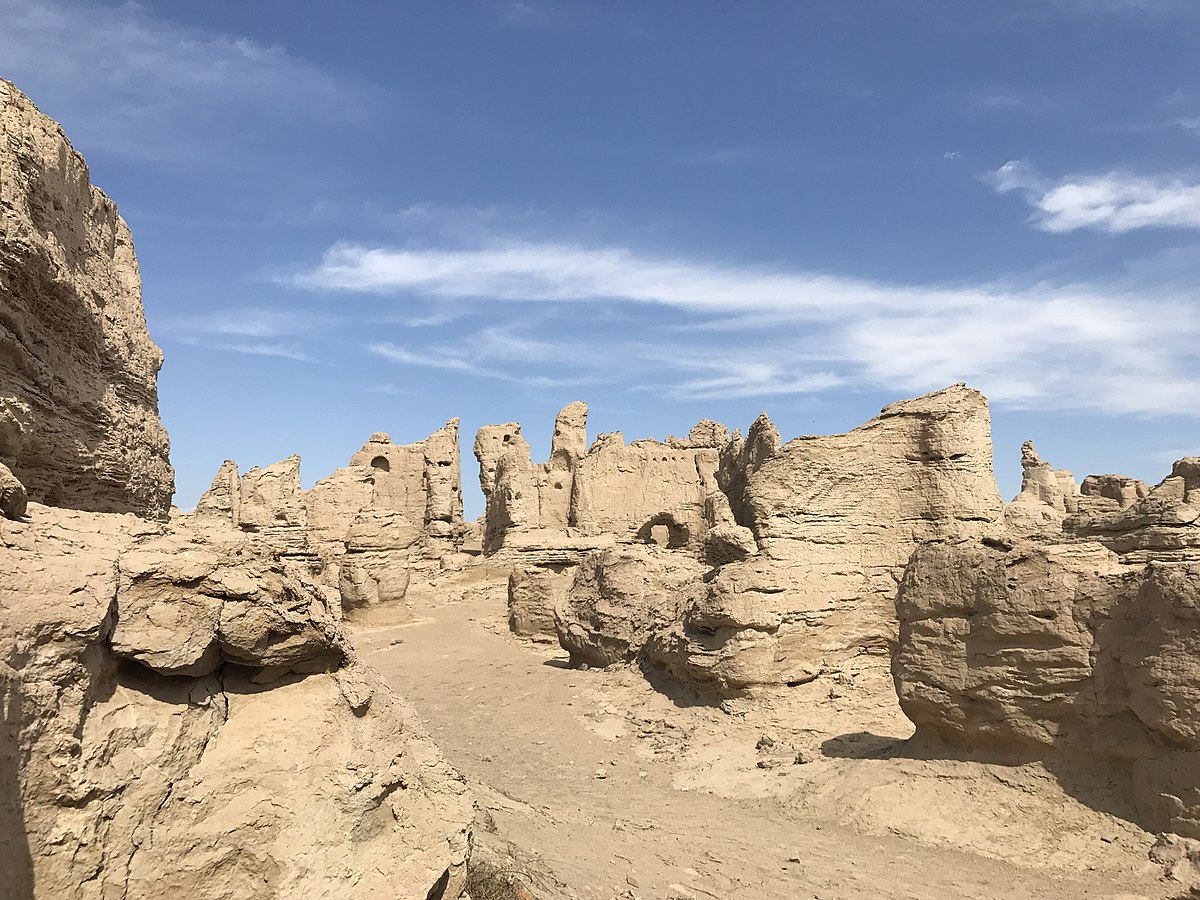

Recommended Itinerary: 8-day Xinjiang Tour to Urumqi, Turpan and Kashgar
5. Miao Nationality
The Miao people mainly live in the southeastern part of Guizhou Province, Damiao Mountain of Guangxi, Hainan Island, and other areas. The Miao nationality has a long history dating back to 5000 years ago. According to the Chinese historical records, its ancestors were "Nanman" tribes and clans that used to inhabit the Yellow River areas to the southern part of the Middle Yangtze River. Miao people only have the spoken languages, mainly divided into three branches: the Xiangxi (western Hunan province) Miao dialect, Qiandong (eastern Guizhou province) Miao dialect, and the Miao dialect used in orders of Sichuan, Guizhou and Yunnan provinces. As Miao people have interacted with Han people for a long time, over half use mandarin.
Like many other minorities live in the mountains, Miao people mainly engage in agriculture and hunting during the slack seasons. They also developed a series of handicraft arts like cross-stitch, embroidery, brocade, batik, paper-cutting, jewelry making, in which the batik art has a history of thousand years. Those diversified handicrafts made Miao people have one of the most beautiful and various ethnic costumes. Meanwhile, Miao people are also good at singing and dancing. They have world-famous love songs and wine songs.
Where can you visit?
As Guizhou province has gathered most of the Miao people, you have to visit Guizhou to understand Miao culture. Guizhou Province is located in the southeast part of southwestern China, adjacent to Hunan, Guangxi, Yunnan, Sichuan, and Chongqing, and its capital is Guiyang. It is where the typical karst landform has been developed. There are many world-famous sights in Guizhou, such as the largest waterfall in Asia and China, the Huangguoshu Waterfall, Kaili where you will visit the biggest Miao Village, Zhenyuan Ancient Town where you can taste the authentic Miao food and enjoy the picturesque night views, Zhaoxing Dong Village (the largest Dong ethnic villages in Guizhou), Chishui Danxia Landform, Red Maple Lake Scenic Area, Fanjing Mountain, and many more.
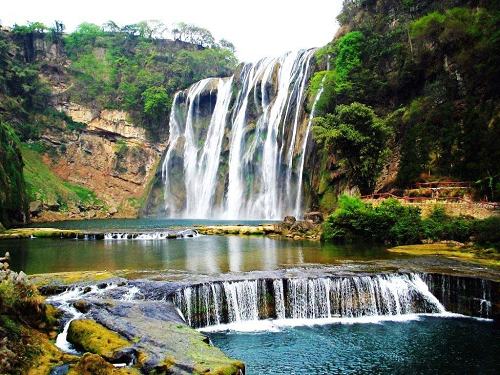

6. Yi Nationality
Yi people mainly live in Yunnan, Sichuan, Guizhou, and Guangxi provinces, and it’s the most populous nationality in Yunnan’s minority groups. Yi people live in most Yunnan areas, especially cluster in Yi Autonomous Prefecture of Chuxiong, Shuailao mountain area of Honghe Hani and Yi Autonomous Prefecture, Wumeng mountain area and the Xiaoliang mountain in northwestern Yunnan. Yi nationality has a long history that can be traced back to before century. According to historical records, its ancestors have been related to the Diqiang people thousands of years ago.
Yi people have their own language that belongs to the Yi language branch of the Tibetan-Burmese language school of the Chinese-Tibetan language system. They also have their characters, the earliest syllabic language in China, and over 1000 everyday use.
Yi nationality has a long-standing and well-established culture and art. There are many valuable records in the Yi language works of history, literature, medicine, and calendar. In the long history of Yi nationality, Yi people created a series of dance and arts of painting, embroidery, silver ornament, and engraving. They also have hundreds of kinds of colorful ethnic costumes.
Where can you visit?
As the Yi Autonomous Prefecture of Chuxiong in Yunnan province is the primary area where Yi people live, you must visit Chuxiong if you wish to learn more about their culture and customs. If time permits, you may expand your travel to Kunming, Dali, Lijiang, and Shangri-la to learn about other minorities of Yunnan.
In Chuxiong city, we mainly recommend three sights, namely Yi Ancient Town, Clay Forest in Yuanmou, and Guanglu Ancient Town. In Yi Ancient Town, you can immerse yourselves thoroughly in the Yi culture. In Clay Forest in Yuanmou, you will see grotesque forms of earth-pillars and wonder at the natural power. In Guanglu Ancient Town, you will see a town of great importance in all dynasties due to its strategic post.
Other sights like the Jade Dragon Snow Mountain, Lijiang Ancient Town, Erhai Lake in Dali, Stone Forest in Kunming, and Tiger Leaping Gorge in Shangri-la are recommended.

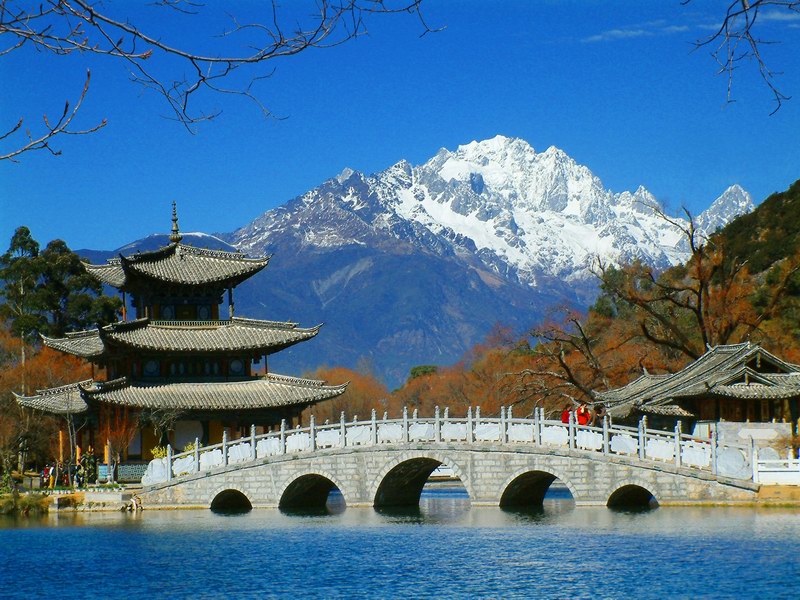
Recommended Itinerary: 8-day Yunnan Classic Tour to Kunming, Dali, Lijiang and Shangri-la
7. Tujia Nationality
The Tujia people mainly live in Longshan, Yongshun, Baojing, Guzhang, and other Tujia and Miao Autonomous Prefecture of western Hunan and Laifeng, Hefeng, Xuan'en, Lichuan, Enshi and other counties of Enshi Tujia and Miao Autonomous Prefecture in Hubei province. Some other Tujia people live in the counties of Chongqing and Guizhou.
Tujia people have their language, but no characters. Most of them can speak Chinese; only several Tujia communities still speak the Tujia language.
Tujia people are mainly engaged in agriculture, and the art of weaving and embroidery is a traditional craft for Tujia women. The Tujia nationality also has other traditional skills, including carving, painting, paper cutting, batik, etc. The Tujia brocade, also known as "Xilankapu," is one of China's three famous brocades.
The Tujia people love to sing folk songs, and they created a lot of love songs, crying marriage songs, waving hands songs, labor songs, and many others.
Where can you visit?
We recommend you have a visit to the Tujia and Miao Autonomous Prefecture in Hunan province, which mainly involves Fenghuang Ancient and Zhangjiajie.
Located in the southwestern part of Hunan Province, the Fenghuang Ancient Town is mainly inhabited by Tujia and Miao people. The bluestone streets, stilted buildings along the Tuo River, long-standing city wall built by verrucano, the tower from Qing Dynasty, and the narrow wooden bridge with stone support combine and make a charming town. You can stroll in the streets and feel the old stories these buildings have to tell.
Another Tujia style sight you must see is the Zhangjiajie Tujia Folk Garden. Located in the urban area of Zhangjiajie city, the Zhangjiajie Tujia Folk Garden is based on the original site of the best-preserved Tujia village. It used to be a "holy place" for Tujia people to worship, offer sacrifice, pray, and hold festive events, and now it is a great place to show thousand-year-old Tujia customs and culture. You can learn about all the Tujia cultures of agriculture, warring, Tusi, architecture, and customs here. Most gardens are wood and stone structures with carved and painted beams, golden ceilings, and eaves with raised angles, vert elegance, and exquisite. There are many exhibitions, such as Tujia wedding objects, headwears, costumes, batik, brocade, silver jewelry, stone jewelry, and rare stone and root carvings. There are also characteristic Tujia shows available. If you have time, you can travel to the Wulingyuan area and visit the Zhangjiajie National Park, Tianmen Mountain, Golden Whip Stream, Huanglong Cave, Baofeng Lake, and so much more.
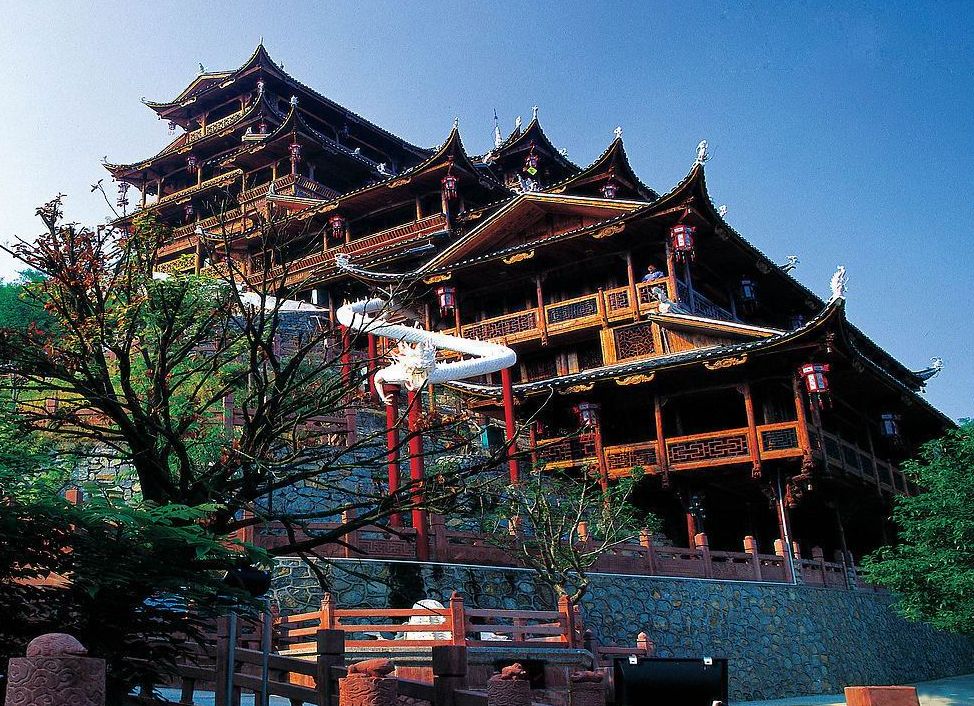
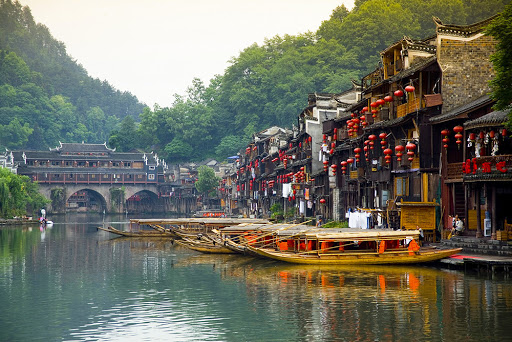
Recommended Itinerary: 7 Days Golden Hunan Tour to Fenghuang, Zhangjiajie and Changsha
8. Tibetan Nationality
The Tibetans are mainly concentrated in the Tibet Autonomous Region and other Tibetan autonomous prefectures in Qinghai, Gansu, Sichuan, and Yunnan. The Tibetans have their language and characters. The Tibetan language belongs to the Tibetan branch of the Tibetan-Burmese group of the Han-Tibetan language system. There are Weizang, Kangfang, Anduo three dialects. The current Tibetan language is the Pinyin script created based on ancient Sanskrit and Western script. Tibetan people also created a unique Tibetan style dance, songs, paintings, sculptures, and medicine. The Potala Palace in Lhasa, the highest palace complex in the world, is an example of Tibetan architecture, displaying the culture, history, painting, carving, and religion of Tibetan people.
Where can you visit?
As the capital of the Tibetan Autonomous Region, Lhasa is a place you can’t miss if you wish to understand Tibetan people.
Lhasa is a plateau city with a history of 1300 years and one of the world's highest cities. For thousands of years, Lhasa has always been the political, economic, cultural, and religious center of Tibet. Many people fell in love with Lhasa city for reasons beyond expression. You have to experience it for yourself. The current Lhasa is divided into the old town and new town. We suggest you stay at a hotel in the old town where there are more choices of hotels, restaurants, and sights. Lhasa's old town is centered on Barkhor Street, with many famous sights like the Jokhang Monastery, Ramoche Monastery, and the Potala Palace.
Most importantly, you can see many lamas and Tibetans with colorful clothes in the old town. It will be such a great pleasure to enjoy the sunlight while having a cup of sweet tea, watch disciples of Jokhang Monastery kowtow, have a bowl of steaming hot Tibetan noodles, pray with the local people in the evening, appreciate the magnificence of the Potala Palace, and watch the Sun Buddha of Sho Dun Festival in the bustling Drepung Monastery. The opening of the Qinghai-Tibet Railway just made all these more convenient.
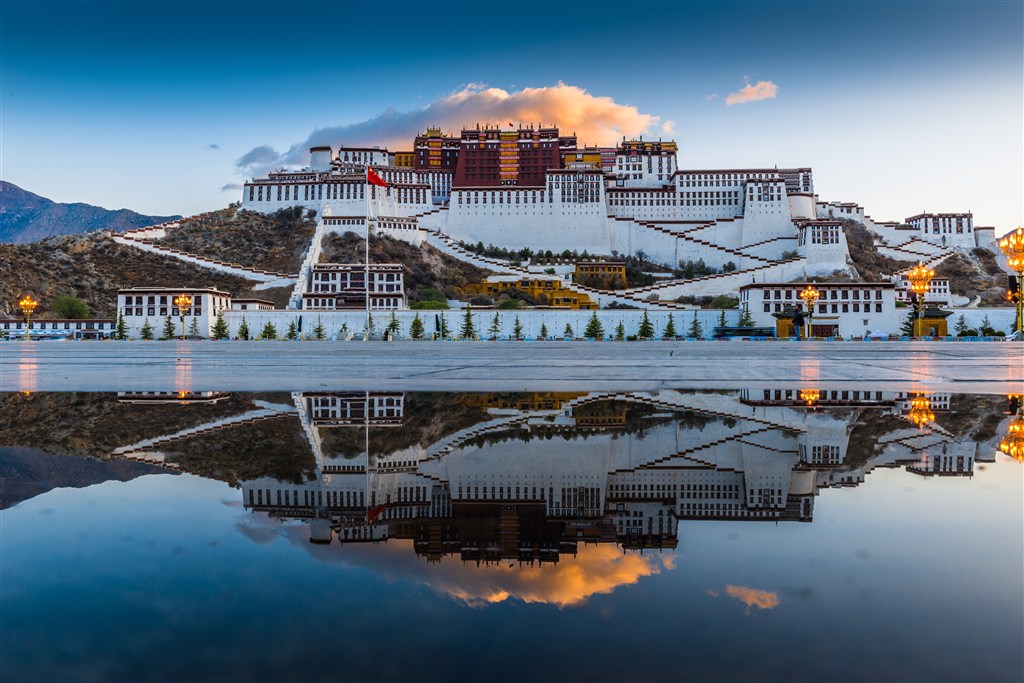
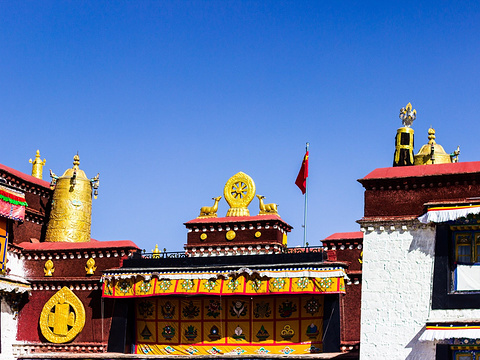
Recommended Itinerary: 4-day Lhasa Classic Tour
9. Mongol Nationality
The Mongol people mainly live in Inner Mongolia Autonomous Region, and some Mongols live in provinces of northern China like Xinjiang, Liaoning, Jilin, Xinlongjiang, Qinghai, Gansu, Ningxia, Hebei, and Beijing, while a small part of Mongol people lives in Sichuan and Yunnan. “Mongol” in the Mongolian language means “the everlasting fire."
The biggest characteristic of Mongol people is that they love horses very much. The ancestors of Mongolian people used to ride horses to go everywhere and created outstanding achievements, one of which is the establishment of the Yuan Dynasty. Horses play a significant role in Mongolian lives. They can’t walk far, eat, live, or entertain without horses. One of the most famous Mongolian sports is horse racing. The songs the Mongols sing are about horses, the dances they perform are horse dance, even their most renowned instrument is called Matouqin (Horse Head String Instrument).
Where can you visit?
As most Mongolian people live in Inner Mongolia Autonomous Region, you have to visit Inner Mongolia to experience the unique Mongolian history and culture.
The particular position of Inner Mongolia made the prairies and deserts the most featured landscapes that attract tons of visitors. The prairies in northern Inner Mongolia are the most popular grasslands, especially the Hulunbuir Grassland, Xilin Gol Prairie, and Xilamuren Grassland can offer the best grassland scenery. In contrast, the famous deserts are mainly located in western Inner Mongolia, to name a few Badain Jaran Desert, Tengger Desert, Kubuqi Desert, and the Sounding Sand Bay. Inner Mongolia is also the hometown of Genghis Khan. There are many historical sights like the Mausoleum of Genghis Khan, Zhaojun’s Tomb, Wudang Lamasery, Xilitu Lamasery, and many others.
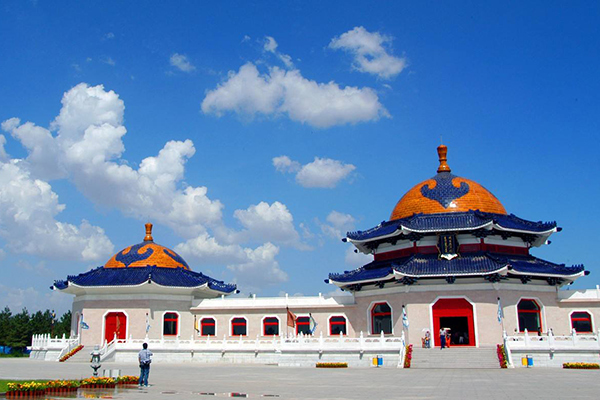
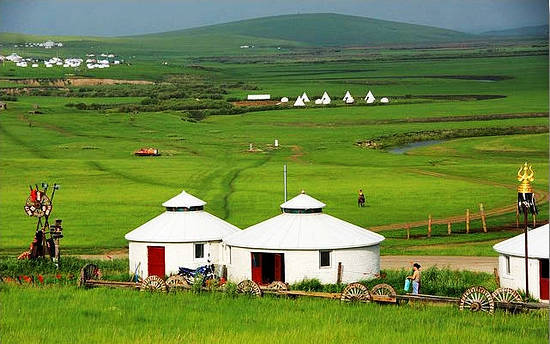
There are 55 minority groups in China; each has its unique history and culture. It’s hard to know them in one travel. You just focus on a few minority cultures to understand at one time. We have many packages to satisfy your wish. If you have specific destinations that aren’t mentioned above, please tell us, and we will customize a minority culture tour just for you!
You May Like
12 Fascinating Ethnic Festivals in China
56 Ethnic Costumes in China
55 Chinese Ethnic Groups
